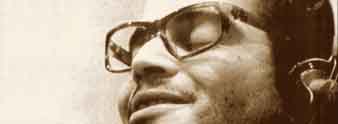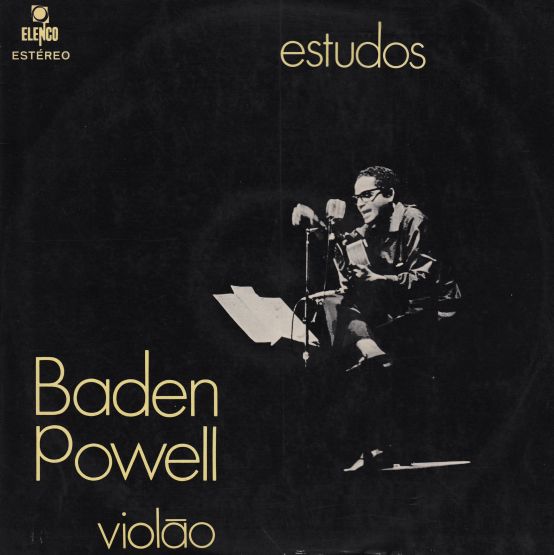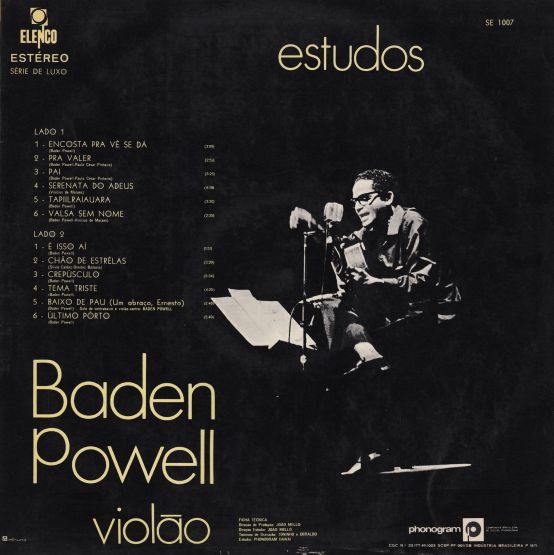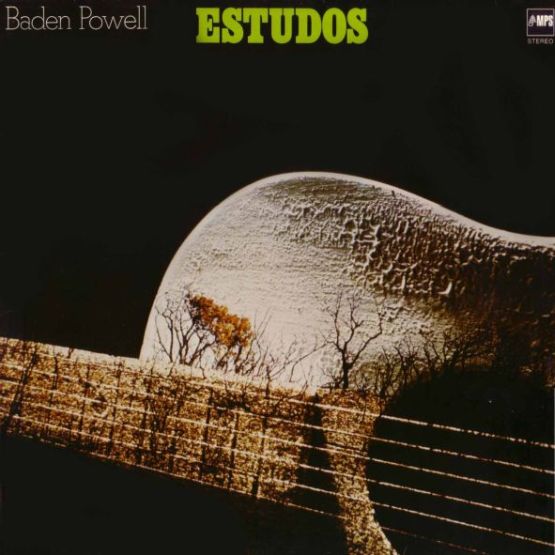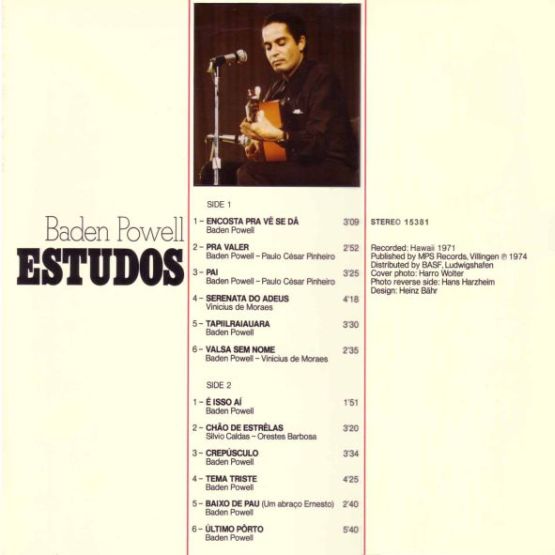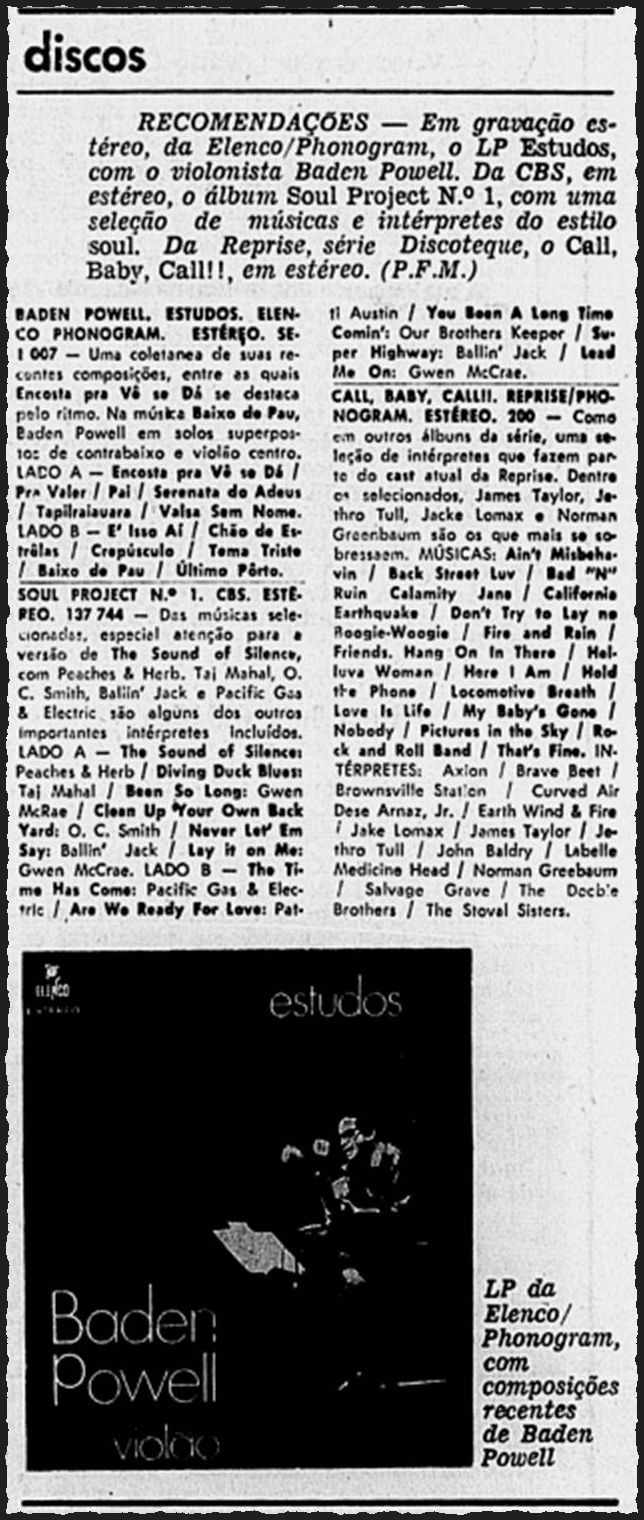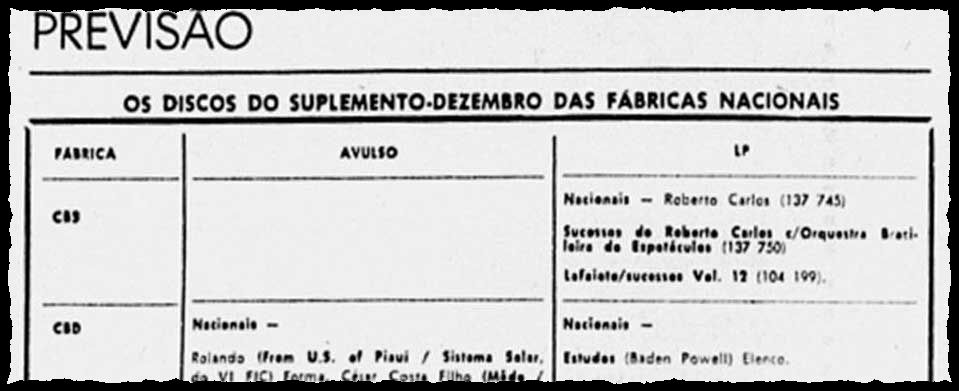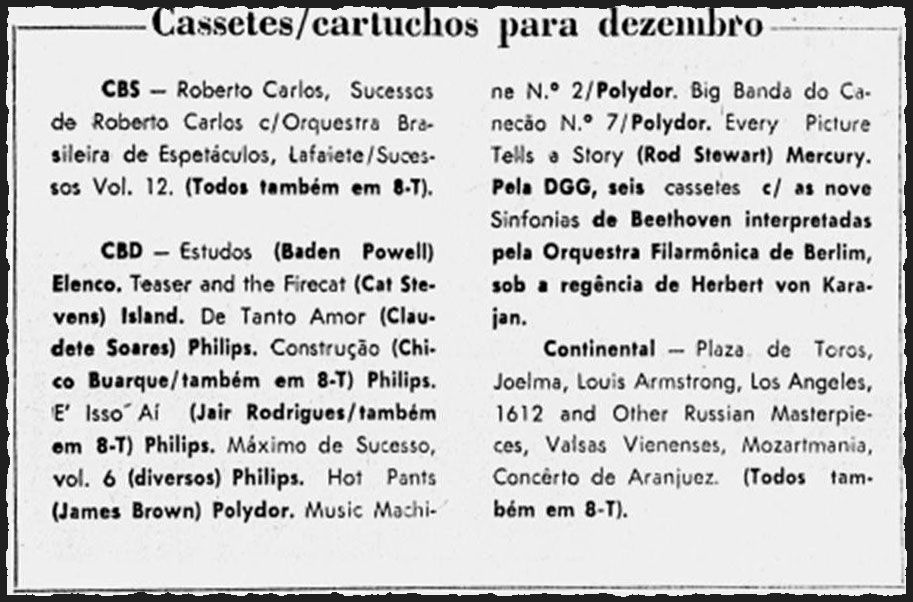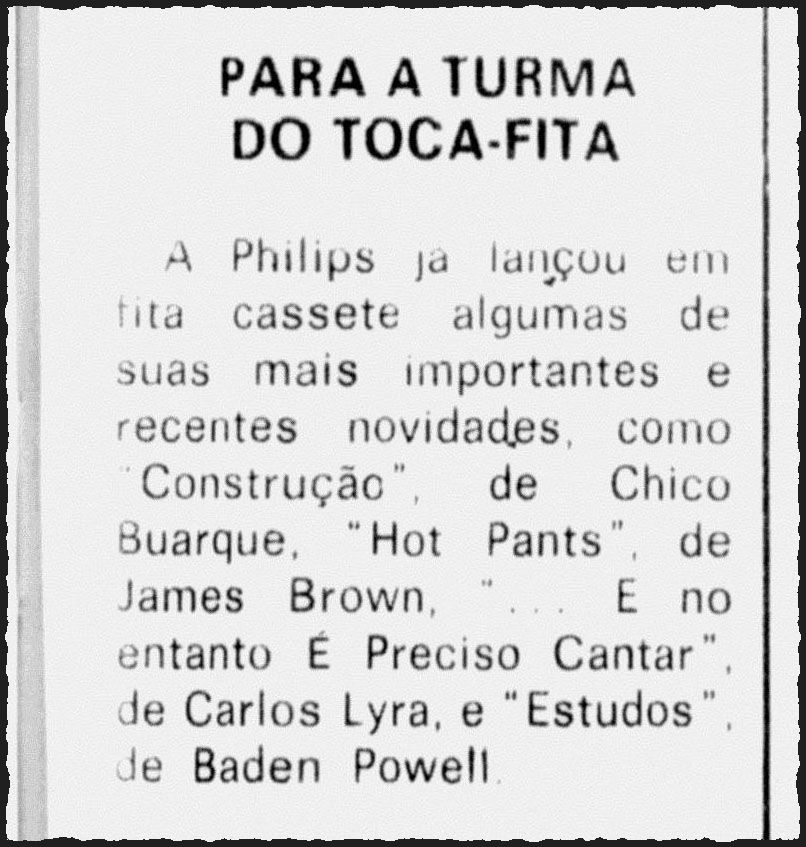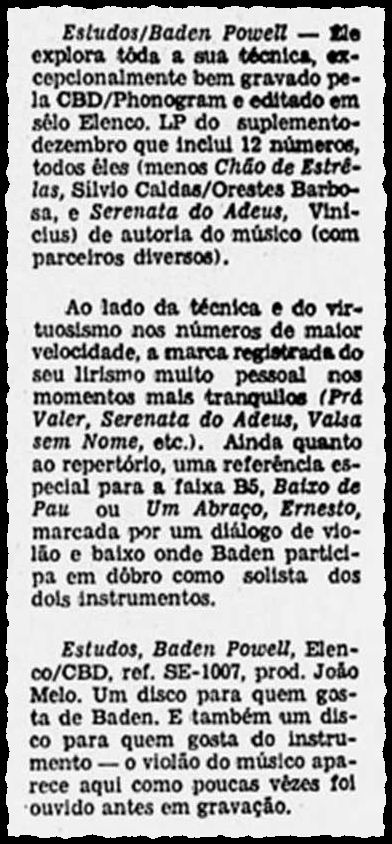|
BrazilOnGuitar says: One of Baden Powell's most popular records, his last Elenco record,
does not reveal its recording date. Even extensive research could not answer our questions.
Estudos is one of his most experimental studio recordings and very well
known. BP recorded only together with the percussionist Alfredo Bessa.
Partly he over-dubbed guitar, bass and percussion, now and then he uses
sound effects. Some compositions already show harmonies of Apaixonado.
Hardly any other record contains so many solo pieces that became guitarist's
standard reportoire quickly. It remains unknown if the material was
originally intended for the planned solo record to be done in December 1971.
Digitalisation of the vinyl record: the first German CD-release from 1990
(821 855-2) is in AAD and comes closest to the original sound of the LP,
even if partly the sound is too low. The German CD sounds like an unplayed
vinyl record without noise. The brazilian re-release from 2003 removed the sound
differences and has a carefully revised sound.
We thank Robert G. (Germany) for his translation.
* Infomation about the word "Tapiiraiauara"
We thank Dr. Bret Gustafson and Dr. Kathleen Lowrey,
anthropologists who work with Guaraní peoples, for
their help and infomation about the word "Tapiiraiauara".
Is probably from Guarani (�heengatu variant of the Brazilian
Amazon), I think the roots are from 'tapir' ("tapii" in Guarani-Paraguayo) and
'aguara' (fox) or yagua (tigre), there are lots of tiger-like animals
with the 'yagua' in them. The 'L' in the tapilrauara spelling may be a
mistake, although old Guarani had consonant final -r (hence tapir), and this might
assimilate to 'l' in local speech today. As I found below in an article by Antonio
Carlos Deigues, it refers to a mythical animal in caboclo riverine culture (head
and feet of leopard, body of painted buffalo, back feet of a horse). There are
many Guarani traces in Caboclo language and culture from �heengatu.
"The mythical world of caboclo fishermen of the Amazonian rivers
and estuaries is filled with spiritual beings or encantaria of the
forest or water, that can favour or harm him.
The worlds of forest and water are two separated domains: two
extensions of the fishermen/caboclo's lives. There are supernatural
entities (caruanas, bichos do fundo [animals of the depth], m�e d'água
[water's mother]) capable of casting spells or haunting and and
bewitching those who abuse or disrespect the rights and rules
pertaining to the use of these environments. In this case, a belief
that one should not harvest more than one needs is reinforced. Like the
forest, aquatic areas along with their human inhabitants also have
their protective spirits, with the power to harass those who engage in
destructive resource use. There also exists the cobra grande (great
snake), the Tapiraiauara, and the on�a d'água (water leopard ), which
inhabit, respectively, the depths of lakes and the rivers (igapós)."
Diegues, Antonio Carlos (2002). Sea Tenure, Traditional Knowledge and
Management among Brazilian Artisanal Fishermen. University of Sao Paolo.
___________________________
Bret Gustafson, PhD
Assistant Professor
Department of Anthropology
Washington University
|
